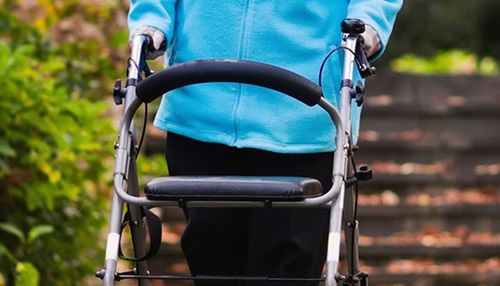Making the Home Environment Safe
What's involved in making the home environment safe?
When caring at home for an ill, aging, or disabled person of any age, it's important to think about home safety. Print out this helpful checklist. Then use it to check for safety issues around the home.
Bathroom and bedroom
Install smoke alarms inside each bedroom and in hallways outside bedrooms. Install them on every level of the home, including the basement. On levels without bedrooms, install smoke alarms in living room areas and near stairs to upper levels. Check batteries monthly. Change batteries yearly or as advised.
Carbon monoxide detectors should be placed at every level of the home and near sleeping areas. Combination smoke alarms and carbon monoxide detectors are also available.
__ Place a nonskid bathmat on the floor and a nonskid mat in the tub.
__ Store all prescription and over-the-counter medicines in original containers and in a safe place.
__ To prevent scalding, make sure the tap water temperature is set no higher than 120°F (48.8°C).
__ Be sure you can move safely in the bathroom and in and out of the tub or shower.
__ Mount grab bars at the toilet, bath, and shower on walls with secure reinforcements.
__ Make sure lighting in hallways is adequate.
__ Place a lamp and telephone near the bed.
__Remove or nail down rugs or carpeting to reduce the risk of falls.
Kitchen, main living area, and stairs
__ Store all cleaning supplies in their original containers.
__ Always turn pot handles inward when cooking on the stove. This can help prevent spills. Use back burners whenever possible.
__ Keep a working fire extinguisher in the kitchen.
__ Secure area rugs to prevent falls and slips.
__ Make sure furniture is securely placed and in good repair.
__ Install light switches at the top and bottom of the stairs.
__ Make sure lighting on stairs is adequate.
__ Both sides of the steps should have handrails.
Outdoors
__ Keep stairs and walkways clear of snow, wet leaves, or other debris.
__ Repair cracks or chips in cement sidewalks and stairs.
__ Make certain railings, gates, and fences are secure and in good repair.
__ Place barriers around a fireplace, wood burning stove, or other heat source. This can help prevent accidental burns.
__ Have chimneys and stovepipes inspected and cleaned regularly.
__ Make sure that hazardous items are secured and in their original containers in the garage, utility room, or basement. This includes items, such as bug sprays, cleaners, auto care products, and weed killers.
Other safety steps
__ Enter emergency numbers into your cell phone. Also write emergency numbers in large print and post them on the refrigerator and near the land line phone.
__ Make sure that bathrooms and bedrooms can be unlocked from the outside.
__ Keep matches and lighters out of reach.
__ Make sure the home has at least two unblocked exits in case of fire or other emergency.
__ Check all electrical cords to make sure they are not cracked or frayed.
__ Make sure outlets or extension cords are not overloaded.
__ If possible, don't use space heaters. If they must be used, make sure they are in safe condition. Never plug them into an extension cord. Place them at least 3 feet from any drapes, bedding, or furnishings. Turn them off when you leave the room.
__Know where the gas, electricity, and water cut-off valves are located in the home in case of emergency.
Get the Medical Equipment You Need at Home







